A Practical, 5-Band Homebrew Wire Beam -- the Upside-Down Umbrella

Experimenting with antennas -- God love ‘em -- is still one area of amateur radio where we can all test, concoct, homebrew, and then see the results of our labors almost instantly. For many of us, it is a real thrill to string some wire from some trees or bolt together some aluminum and noticeably improve our ability to snag signals out of the sky or fling RF into the ether.
Let’s all agree that there is little that is new in the area of antennas. And what there might be is probably beyond the reach -- technically, economically, and engineering-wise -- of most of us. But we can always borrow, filch, modify, and just plain steal from work that has gone on before us and adapt and develop antennas that meet our specific needs. Antennas that give us that thrill when they work better than whatever we were using before. Or teach us something if they are not.
So, I wanted an HF beam. My vertical, my G5RV, my skywire horizontal loop, and my multi-band dipole all do a reasonably good job from 160 through 6 meters. They enabled me to work more than 200 countries with only 100 watts since I returned to being active in 2005. But I yearned for more. And I craved a new project.
I actually purchased a used Cushcraft MA-5B mini-beam and planned to put it atop a 50-foot Rohn 20G tower I acquired. The MA-5 covers 10 through 20 with two elements on 10, 15 and 20 and is a rotatable dipole on 12 and 17. But the lure of building something on my own kept tugging at me. The MA-5 is still wrapped in the package the OM from whom I bought it shipped it to me. Instead, I decided to go out and build myself a “beam.”
Research:
I had a few specifics in mind when I started researching the various possibilities for building an HF beam antenna.
Some signal gain in a specific direction
Side and front-to-back signal rejection
Small wind load -- less than 10 pounds (the 20G is light duty tower)
As small a rotation radius as possible (trees, trees, trees!)
Multi-band capability, hopefully for 10 through 20 meters including WARC bands
Reasonable cost by using readily available materials
And the biggie, something I could build myself, since I don’t have access to a machine shop and I do have five thumbs on each hand
The Internet provides all the information one could want for researching various possibilities, plus there are many good antenna books that have suggestions as well. I looked at Moxons, quads, spider beams, vertical arrays, and more. Each had its good points and several of them seemed to be within my capabilities to build. Then, as I learned more, my interest returned to a particular antenna I had considered when I first returned to the air three years ago.
The commercial version of that antenna is called a “hex-beam” and it is manufactured by Mike Traffie N1HXA. (http://www.hexbeam.com/) The antenna gets very good reviews on the various ham radio web sites, as does the company’s customer service. They are manufactured in monoband and 5-band versions. Some of Traffie’s models are specifically designed for portable operation and are great solutions for those who like to operate from distant mountaintops and want a good directional antenna to carry along and quickly set up. The specs on Mike’s web site are quite interesting and seem to be honestly depicted. I see no reason to doubt their accuracy. The venerable Lew McCoy W1ICP (SK) wrote a glowing report on the antenna in CQ Magazine.

N4KC’s upside-down umbrella antenna, mounted at about 47 feet.
Well, the “hex” seemed to meet all my criteria. Now, I had to decide if it was something I could build myself or if I should start hinting to the proper people about what a great Christmas present Traffie’s creation would make.
As designed by N1HXA, the 5-band hexbeam consists of three pieces of wire for each band. Two of the wires are deployed as a center-fed radiating element and the other acts as a director, making it a two-element beam for each band on which it is designed to operate. The elements are strung around six Fiberglass spreaders that act as supports. The longest wires, the 20-meter elements, carry the tension and pull the spreaders up into a configuration that looks for all the world like an upside-down umbrella without the fabric covering. The shorter wires that make up the elements for the other bands are strung around the upturned spreaders, spaced a distance apart so there is little or no interaction between them. The 10-meter ones are at the bottom, about six inches above the baseplate that holds the bottom ends of the spreaders. In order to keep the turning radius as small as possible, the elements are horizontally arrayed in the shape of the letter W up and down the spreaders (See the graphic below that shows a top-looking-down view of the shape of the wire elements. The spreaders are not shown).

Note that the driven element is fed in the middle and offers about a 50-ohm load. The center of the W for each band’s driven element attaches to two points on a center post, arrayed from the 10-meter wires nearest the baseplate to the point near the top of the post that lines up with the 20-meter element. The antenna itself is fed from the top and Traffie’s version runs a feedline down the middle of the center post, connecting each band’s feed point together. Yes, the beam uses a single feedline for all five bands. Traffie’s reflector is also shaped in the form of a W, presenting a mirror image of the driven element. The point where the ends of the driven element and reflector approach each other is critical in its spacing and employs a spreader to help establish the correct distance and keep it constant.
As I researched farther, though, I learned that several hams had been experimenting with their own homebrew versions of the beam. Steve Hunt G3TXQ had been modeling and building versions of it for some time and had been generous enough with his work to publish it on the Internet (http://karinya.net/g3txq/hexbeam/) as well as in some amateur radio publications. He had also done considerable work in an effort to get even better front-to-back ratio and increase the already broad bandwidth of the Traffie’s hex-beam. Steve had found that by making the reflector a broad U shape around the outside of the spreaders instead of the mirror-image W shape, and by changing the dimensions of the elements, he could make considerable improvement. From his models, the antenna achieved a less than 2:1 SWR throughout all the design bands. 10 meters did not quite manage less than 2:1 across the entire band but it was within reach of the internal tuner in most rigs. The only compromise was that the turning radius increased from about 9 feet to a little less than 11 feet and added a pound or so to the weight.
Back in the USA, Leo Shoemaker K4KIO was taking Steve’s modeling results and developing techniques for turning them into a real in-the-air antenna. In addition, like Steve, he was willing to share his detailed construction recommendations on his well-done web site.
(http://www.leoshoemaker.com/hexbeambyk4kio/general.html) The more I studied Leo’s site and read the results of his experimenting, the more excited I became about trying to string this baby together and see how it played. I already had some of the parts I would require including wire and rope. I needed some of the rest -- paint, liquid electrical tape, liquid nails, wire lugs, tie wraps—for other projects anyway -- including some which are decidedly non-ham-radio in case the wife reads this.
By the way, there is a very active hex-beam Yahoo group (http://groups.yahoo.com/group/hex-beam/?v=1&t=search&ch=web&pub=groups&sec=group&slk=1) that talks about the commercial version as well as the homebrew types. The members were encouraging and helpful. And the way Leo described things, building one of these things actually seemed doable.
Doable and worth the trouble! This is not a four-element, wide-spaced mono-band beam. It will not work miracles. It won’t blow holes in pileups. Anyone who thinks it will perform as well as a SteppIR or a full-size Yagi is due to be disappointed. That being said, the thing does appear to do a very good job, considering its size, weight and cost. Many claim it will do far better than it ought to, but I don’t know.
It also seems forgiving of being deployed at low heights and even performs best for most applications at around 50 feet above the ground. Its wind load -- as built following K4KIO’s suggestions -- is less than 6 pounds. Since it is a uniform size and weight and circular in shape, it is not nearly as wind resistant as a conventional beam. As typically constructed, the broadband version of the six-spreader wire beam weighs in at around 20 pounds. That makes it possible to launch it on a push-up mast and rotate it with a light-duty rotator.
On his web site, G3TXQ does an interesting comparison between his broadband antenna (as modeled), the Cushcraft MA-5B two-element beam (like the one still in the shipping package out in my basement), and the HyGain TH11DX, which is, by all accounts, a fine HF antenna. He shows the comparison measurements for 20 meters and also takes a look at their turning radii, weight, and wind load (commercial beam specs based on material published by the manufacturers).
Well, much as I would love to have the gain and front-to-back ratio of the HyGain, I simply do not have the area to rotate it (remember my trees, trees, trees?). I am also not quite ready to invest in a tower that would safely hold it. Though there are no antenna restrictions in my town, I still want to remain relatively transparent to neighbors. Being stealthy is another plus of the upside-down umbrella (see below). By the way, some builders maintain the gain of the hexagonal wire beam is somewhere north of 5 dBd on some bands. But even at G3TXQ’s modeled gain predictions, the upside-down umbrella has considerably more gain than the 2-element Cushcraft (especially on 17 and 12 where the MA5B has NO gain…it IS a dipole). It certainly appeared to me that the antenna was worth building.
Preparing for Construction:
Okay, I admit it right here in front of everybody. I am not that handy. Not only have I always been a klutz, but an auto-immune neurological disorder I contracted a few years ago left me with limited fine motor skills. I have trouble holding things like nuts and bolts. Still, looking at Leo’s suggested construction notes, ( http://www.leoshoemaker.com/hexbeambyk4kio/broadhexbuildingnew.html) I decided I could do it. I started gathering the additional stuff I needed.
Two areas had me just a little skittish. One was the spreaders. Some have used PVC pipe, which is cheap and readily available, but they found it tended not to be able to maintain the umbrella shape of the beam. PVC also needs lots of paint to protect it from UV rays. Others have tried cane poles but they, too, have trouble holding up under the strain of maintaining the distinctive shape that keeps the wire elements optimally spaced. On his site -- and for no compensation -- Leo mentions Max-Gain Systems in Atlanta. (http://www.mgs4u.com/index.html) I will also mention them -- for no compensation -- because they offer a fiberglass spreader kit, already specifically cut to the dimensions recommended by K4KIO. That also saves money on shipping. You may be able to find another source for lower price, but this seemed like a reasonable deal to me. I see the Max-Gain guys at hamfests and know they offer good quality merchandise, so I decided to buy the fiberglass spreaders for this project from them. They arrived as promised two days after ordering, all nicely cut and fitting together perfectly. I also have a bunch of 4-foot fiberglass sections left over for other projects, too.
The second concern was the baseplate, the device onto which the spreaders are mounted. This is the true “heart” of the antenna, where the spreaders spread out from, and where the center post passes through. Some hams use plastic-type or tough polyurethane plates or even plywood. These can work, depending on the amount of stress the spreaders and mast put on it or how much weight it adds to the antenna. However, I did not feel that “cutting board” type plastic would be sturdy enough and plywood would eventually succumb to the weather, no matter how much paint I used. I located a supplier who sold aluminum, cut to any shape I wanted, but I had no idea how I would drill out the holes. I only have a cordless hand drill, and I suppose I could have accomplished the task with lots of patience, bit replacement, and battery recharging, but I was worried about getting the holes in the right place. I really wanted this crucial part of the antenna to be precise and tight.
Enter Ron Mott W4RDM. (http://hexkit.ronmott.net/) I saw on the Yahoo hexbeam reflector that he was offering a pre-drilled aluminum baseplate and all the U-bolts and hardware a guy needed for K4KIO’s version. That included a pair of floor flanges that Leo discovered that nicely reinforce the point where the center post runs through the baseplate. (Some people only use one of the flanges but again, that seems like a pretty crucial point for the antenna and two is better.) At first blush, I thought the cost for Ron’s plate and accessories was a little high. Then I priced aluminum plates -- before doing all that measuring and marking and drilling -- and the big-box-hardware-store prices on U-bolts, floor flanges, and the bolts, washers, and nuts to do the job right. I quickly got on Ron’s web site and ordered a plate before he realized he was selling them too cheap. He was kind enough to deliver the whole package to me at the Huntsville, Alabama, Hamfest to save shipping.
(Max-Gain now offers a parts kit (http://www.mgs4u.com/hexbeam-kit.htm) for this antenna that includes pre-cut fiberglass spreaders, wire, and rope. WI4USA (http://www.wi4usa.com/) is selling a full kit and instructions for building the G3TXQ version, too. I have not tried either kit so I can’t give recommendations, but they certainly seem worth checking out if you don’t want to gather up all the necessary parts yourself.)
Building the Beast
Once I had everything gathered up, actual construction went very quickly. The wire elements are attached to the center post and the feedline using bolts and nuts that are stuck through holes I measured and drilled in the Fiberglass. Getting those nuts poked through the holes, using K4KIO’s coat-hanger idea for sticking them through from inside the pipe, proved to be a bit tough for me. I did better when I got a stronger coat hanger to use and got it done, though.
The antenna also uses a single coax feedline and short coax jumpers are employed to connect the center-post bolts where each set of driven-element wires are hooked up to be fed. I made my jumpers from RG-8U since I planned on running some power at some point. Getting them cut to the exact length and bolted in place was quite a challenge. RG-8X would have been much easier but I wanted to use the bigger coax.
Otherwise, following Leo’s suggestions and photos, I had no trouble at all putting the beam together. I married and glued the three sections of each spreader one rainy day inside the basement. I also did the center post assembly that day. When the rain stopped, I sprayed everything with primer and black paint, the better to make it disappear in the trees.
Then, on a beautiful late-summer day, I got an early start and attached the spreaders to the baseplate, measured, cut and attached the antenna wires to the center post and spreaders, and cut and tied the support ropes. The antenna was basically built and shaped, the elements connected and checked with a volt/ohm meter, and set up in about eight hours. Upside-down umbrella or not, it was a beauty to behold!

My upside-down umbrella, seen from my backyard. The tower is bracketed to the house at the 20-foot level. The bracket is lag-bolted through the exterior wall through a 2X6 board on the opposite side of the studs in the attic. With the beam and rotator mounted, it is solid and has practically no sway.
One suggestion: if you follow Leo’s plans, pay attention to his notes about the importance of 128 inches. He offers a nice little geometry lesson on his website. If the spreaders and the 20-meter wire elements are in the correct positions, each dimension from center post to the 20-meter element and between each spreader end will be close to 128 inches.
I built the antenna with the center post mounted on a 5-foot mast that I stuck into the center hole (for the umbrella) in a metal patio table. I had the table in a clear spot in the backyard, hopefully out of sight of neighbors. I piled rocks and other weight onto the table to make sure it did not turn over if we got some wind. That made stringing the antenna wires and support rope relatively easy. A neighbor’s young kids came over and, after watching me work and staring at the beam for a while, they asked me what it was.
“It’s a rose trellis,” I told them. I hope that they relayed the lie to their parents. I told another curious kid it was a digital TV antenna. That’s not totally a falsehood. I guess it could pick up a TV signal, though maybe not efficiently enough to be used for that purpose.
Once the beam was built and everything tightened down, I wanted to get it a little higher off the ground so I could look at the SWR and do any tuning that might be necessary. I lifted the antenna out of the patio table “stand” and placed it gently on the ground. Although it only weighs about 20 pounds as I built it, nd can easily be lifted by anyone of average strength, it still is a little unwieldy and should be handled by the baseplate, not the spreaders or wire elements. I inserted a 10-foot mast into the center post, drilled a hole through mast and center post, and inserted a bolt. Then I tightened on a nut to keep the antenna from turning freely on the mast. I then proceeded to try to lift everything -- antenna and mast -- and poke the end of the mast down inside the middle hole in the patio table. I intended to simply walk it up and drop it down into the table.
I had not anticipated how heavy 20 pounds gets out on the end of a ten-foot mast. I almost lost it a couple of times but finally got it into the opening. I then walked it up until the pipe slid down through the umbrella hole to the ground and everything was upright. The fellow from across the street came running up about then and said, “I saw you doing the Iwo Jima thing and tried to get over here to help!” So much for not letting the neighbors see what I was up to! At any rate, he was fascinated to learn that this was an antenna that could talk to the world. Or at least I hoped would! This particular neighbor knows I am a ham so I spared him the fictional use for all that wire and Fiberglass.
Testing
I checked continuity of the feedline and element connections to the center post and to the coax pigtail I was using to feed it while the antenna was on the ground. Now that it was marginally higher in the air, I was anxious to check SWR. I had about eight feet of the pigtail RG-8U hanging down from the feedpoint (at the top of the center post for a number of good reasons) and I couldn’t wait to hook up my MFJ 259B antenna analyzer and see what I had. Very high SWR would indicate a serious problem somewhere. Or that Leo and Steve were exaggerating how broadbanded the antenna was.
Well, I was impressed. The antenna was mostly better than 2:1 across all bands. 20 meters was a bit high at the upper end of the band. Still, I thought that was acceptable considering that the antenna was only about ten feet off the ground, five feet above the deck, and seven feet above a metal patio table.
Without expecting much, I hooked up my 100 feet of RG-8X that I keep on a run from the shack to outside, just to try out various projects. Then I went inside to give it a whirl on the air. Well, I could easily see directionality and front-to-back. On some signals, it was already the best antenna, but on others, one of the wires or the vertical did better. Still, it seemed to work on all five bands without sparks or smoke. I worked a couple of stations, just to make sure, including the Slovak Republic on 17 SSB barefoot and Croatia on 20 SSB with 600 watts.
Performance
I compare antenna performance to the first time I saw color TV as a kid. I was perfectly happy with my old black-and-white TV picture until I saw the Tournament of Roses parade on my grandmother’s new RCA. Never mind that the “colors” were mostly red and green and the picture was swirling all over the place. It was so much better than what I had before that I thought it was the best it could possibly be.
Anecdotal evidence of an antenna’s performance is shaky, too. If we spend thousands of dollars on a sky full of metal, we tend to think it is the best aerial ever erected by man. Same if we bleed and sweat building something from scratch. Still, I have really tried to remain subjective, and to compare my homebrew hex to the other antennas.
On a dreary October day, we raised the antenna to the top of the 43-foot tower (I decided not to use all the sections I had and mounted a damaged section in the concrete base for a base section.) I hired a ham who is also a professional tower guy to help me. We raised it with a pulley and rope with me pulling from the ground and him guiding it up the side of the tower and preventing it from snagging. This is a relatively delicate operation, so have help who know what they are doing. Standing on the rotor plate (and with his climbing belt safely attached to the tower), my friend lifted the beam up and set it down onto the original five-foot mast. He replaced the bolt beneath the baseplate, through the mast and center post, and bolted it tightly.
I use a Ham IV rotator, which is very much overkill, but it happened to be the one I had. The installation as I did it puts the baseplate at about 47 feet and the 20-meter element at about 50 feet.
So, does it work? Absolutely! I used the beam as much as I had time to in the CQWW SSB contest, listening to stations with the beam and then switching, in turn, between the G5RV, the vertical (ground-mounted Hustler 4BTV with 85 radials under it), the skywire horizontal loop, and the ladderline-fed dipole. The beam, when properly aimed, beat the latter two antennas every time on 20 through 10. The G5RV was typically 2 to 3 S units below the beam on 20 and 17 but not even that close on other bands. The vertical was about the same as the G5RV on 10, 15 and 20 for DX but was considerably below the beam stateside and into the Caribbean and South America.
I had been trying to snag the VU7 in Lakshadweep since they first fired up but had not even been able to hear them well enough to work them. With the beam, I got them on the second call on 17-meter CW. Better propagation? Maybe, but I still could not hear him well enough to work him -- much less break the pileup -- on any of the other antennas. The same thing happened with VK9DWX on Willis Island in the South Pacific. When I log a contact, I note which antenna I’m using and whether or not I’m running the amp -- 600 watts PEP SSB, 400 watts CW. On the entry for VK9DWX I wrote next to “Hex” the note, “Thank goodness…could not even hear him with other antennas.”
I have also had several very nice ragchews with stations all over Europe. I know propagation has been better lately, but again, I checked the other antennas and the wire beam was better -- both ways, transmitting and receiving. Just today, as I was writing this article and in the middle of the day, I heard VQ9RD on Chagos Island in the Indian Ocean on 20 meter SSB. There was a pretty good pileup already but I called once and got him.
Seems like that happens more and more lately. My imagination? Maybe. But some of it has to be my funny-looking rose trellis digital TV antenna.
So there’s the hated “anecdotal” report on the antenna’s performance. It seems that many of the guys who build this antenna become almost evangelical about it, and I’ll avoid claiming it to be any more than a small, two-element compromise antenna. But somehow, it does seem to perform better than it has any right to do, considering its size, weight, cost, wind load, and ease of construction.
Let me make this suggestion, though. If you want a good, light, small antenna that offers excellent SWR, good front-to-back and side rejection, and decent gain over a dipole or vertical across five ham bands, and one that will not have you standing at the window, breathlessly watching it every time the wind blows, then consider this one.
If you don’t feel like building one, read the reviews on the Traffie Hex-beam and decide if it is for you.
If you want to build one yourself, go to the sites of K4KIO for instructions and G3TXQ for the theory behind the antenna.
If you don’t have any of the parts and want to buy a full kit, visit the Max-Gain or WI4USA site and learn more.
If you have or can acquire everything else and want to get a good deal on spreaders and/or baseplate, visit the Max-Gain or W4RDM web sites. If you want to gather the stuff together yourself, do not hesitate.
Put one of these things together, put it up on a push-up mast or light tower, rotate it with a TV rotator, and join the rest of us “hex nuts” having a blast with our odd-looking, upside-down umbrellas.
Read more...







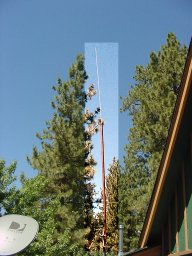
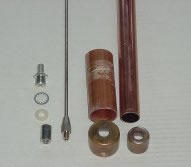
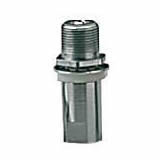


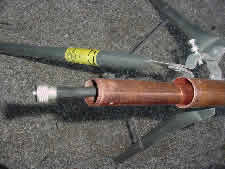

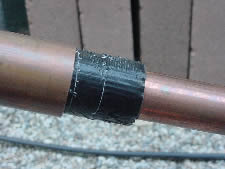
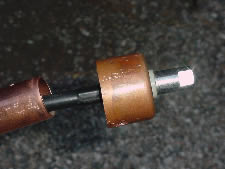
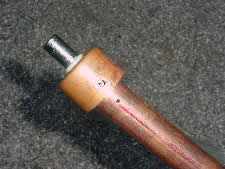

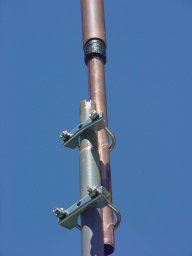
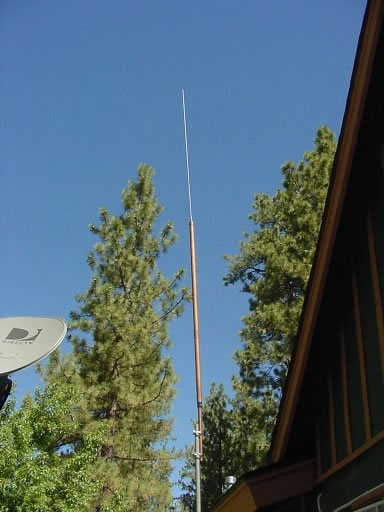
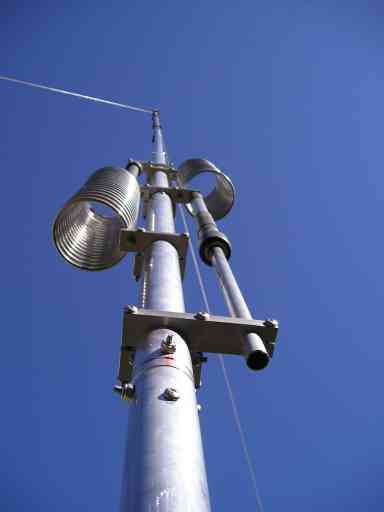 I
I
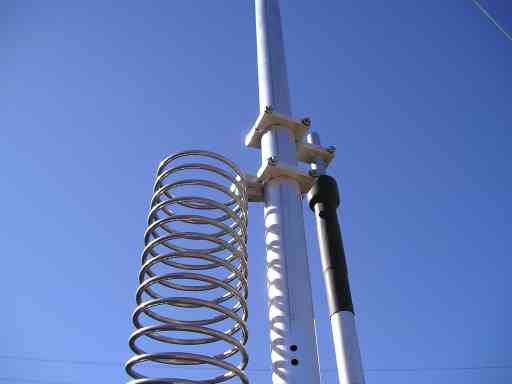
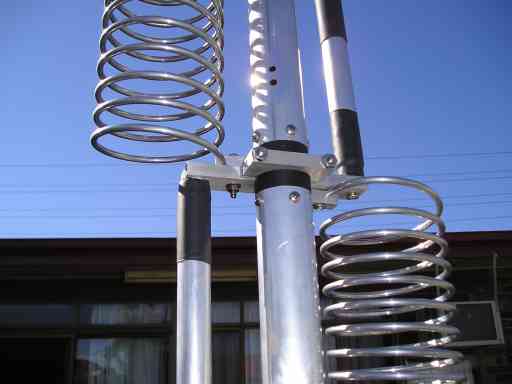
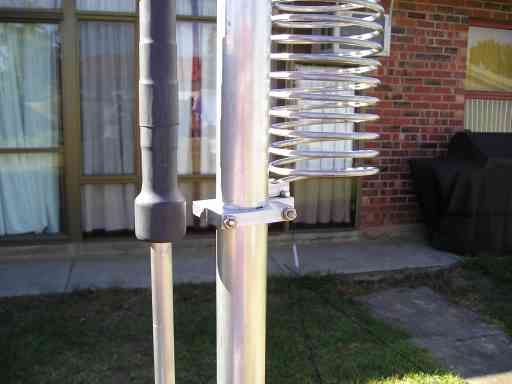
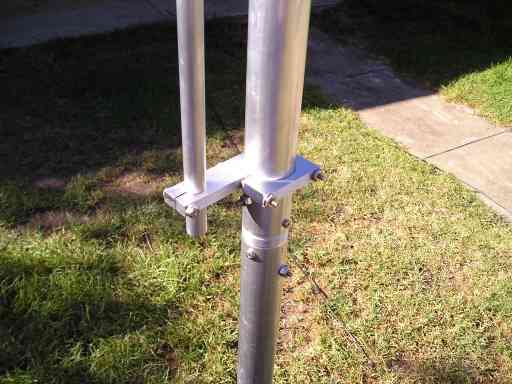
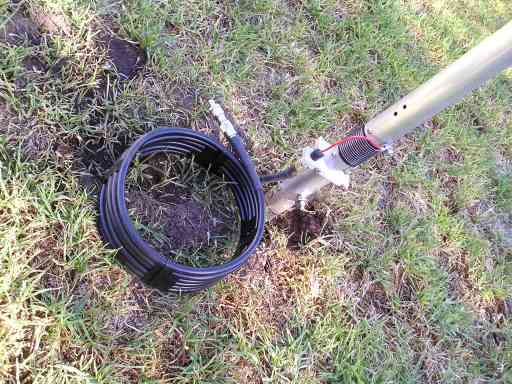









![[LCWO Banner]](http://lcwo.net/pics/lcwo-banner.png)
![[LCWO Button 1]](http://lcwo.net/pics/lcwo-button1.png)
![[LCWO Button 2]](http://lcwo.net/pics/lcwo-button2.png)
![[LCWO print logo]](http://lcwo.net/pics/qsl-logo-small.png)
